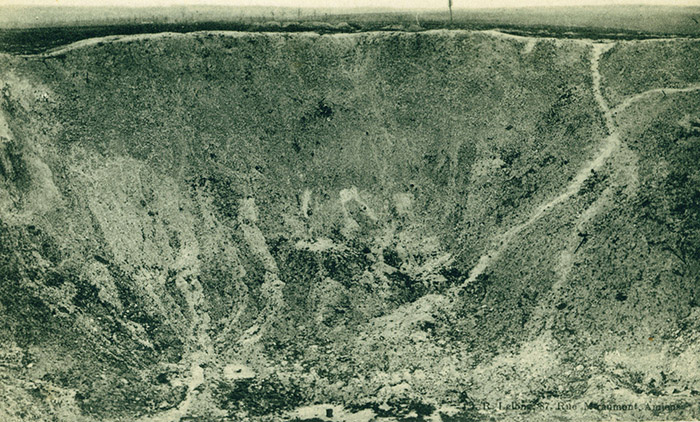
Q. I was told by a friend that on July 1, 1916, minutes before the first assault at the Somme, the British set off a large mine explosion and the resulting Lochnagar Crater is the largest ever made by man. Is this the case, and if so, why are the Messines Ridge craters, created at Passchendaele in 1917, so well known while the Lochnagar Crater is rarely mentioned?
Paul A. Doucette
Mendon, Massachusetts
A. It is true that the so-called Lochnagar Crater near La Bousselle is the largest manmade crater on earth, but it is less well remembered than the craters along Messines Ridge because it left behind little but failure.
The great mine built by the 179th Tunneling Company, Royal Engineers, was detonated at 0730 hours at the start of the Somme offensive, demolishing the German position known as Schwaben Höhe and killing a lot of soldiers. But the Germans reacted with astonishing speed, manning other positions in time to deal with the follow-up assault. Within half an hour, they had stopped the attack dead in its tracks, with hundreds of casualties.
By contrast, the 19 explosions set by the British on June 7, 1917, along Messines Ridge killed about 10,000 Germans and devastated the center of their breastwork system. In the direct wake of the mining, the British infantry advanced behind a creeping barrage, with tanks and aircraft to support them. They swiftly overran 11 Germans battalions, and the overwhelmed remainder fell back. When the advance halted before new enemy defenses on June 14, the British had secured the ridges as planned, making this one of their few clear-cut tactical and operational successes of the year.
Today, the Lochnagar Crater is maintained in part because of its historical significance and because of the likelihood of undiscovered remains lying within, making it hallowed ground.
Jon Guttman, World History Group’s research director, is the author of many military histories.
Something about military history you’ve always wanted to know? Submit your question to MHQeditor@weiderhistorygroup.com, and we’ll have an expert answer it.

.jpg)



